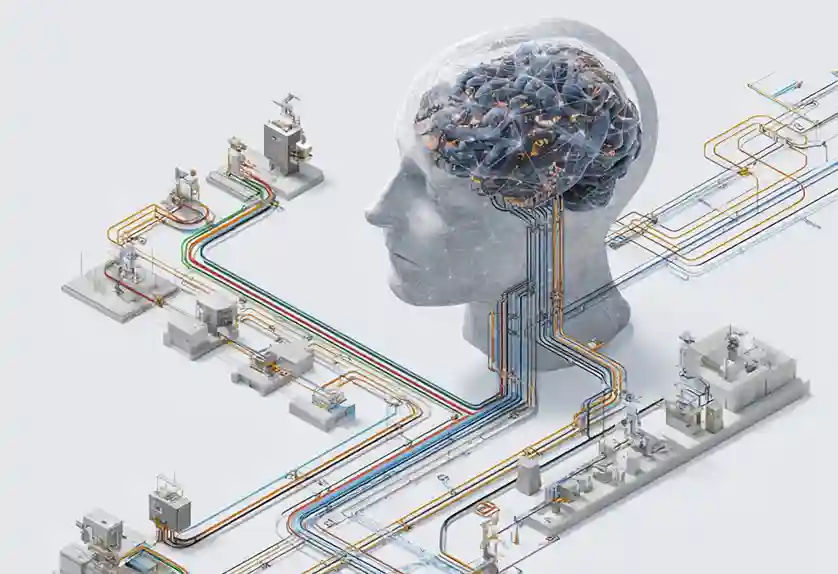In today's competitive environment, global enterprises face the constant challenge of meeting consumers' demands while maintaining a competitive edge. According to HubSpot, digital marketers that prioritize a continuous delivery of blogging content enjoy 13X more ROI than businesses that do not.
As a marketer or content manager of a large enterprise, you may feel overwhelmed with the challenge of delivering an efficient content marketing strategy. After all, content creation goes beyond just blogging. The process involves the creation of high-quality assets, such as images, videos, or other content, without assurance that it will benefit your business.
By leveraging Content Operations, or 'ContentOps,' your organization can create high-quality content quickly and consistently. This article will provide you with a thorough understanding of ContentOps and how it enhances your content strategy and value delivery.
ContentOps vs. Content Strategy: The Differences and Similarities
ContentOps and content strategy are two phrases that get a lot of attention among digital marketers. Content strategy involves transforming business goals and objectives into a plan that focuses on content as the primary medium for reaching them. It constitutes a formalized method for managing content across the entire content life cycle.
Sure, you may wonder, “How is content strategy different from ContentOps?” The truth is they are both linked. ContentOps serves as the overall implementation of content strategy. ContentOps encompasses the people, processes, and technology necessary to plan, create, manage, and analyze all types of content across all channels.
Alternatively, content strategy provides a roadmap for ContentOps to follow to meet enterprise goals. Enterprises that waste time and resources can rely on ContentOps to deliver their content strategies and achieve their goals.
How ContentOps Drives Better Content Strategy and Delivery
If content strategy is the roadmap that outlines how you plan to get to a destination, then ContentOps is the vehicle that gets you there. Even if you have the best plan, it doesn't matter until you execute it. It can be difficult to produce high-quality content that drives brand awareness and leads without the right strategy, team, or tools.
ContentOps leverages the three essential components to content delivery: people, processes, and technology. When these three processes are well-aligned, the result is the successful and consistent delivery of content across multiple channels. How exactly do ContentOps link content strategy and delivery?
People
People are often considered the most challenging aspect in any content production process. ContentOps helps align and improve collaboration across departments by eliminating content silos, clearly defining roles within the content teams and increasing visibility across the board.
Cross Department Collaboration and Eliminating Silos
With the vast array of tools available on the web, everyone is capable of creating content. That means it’s become even harder to organize and manage enterprise content. In addition to content creators, other departments can contribute to the distribution of knowledge necessary to produce and deliver the best content.
In the absence of a coherent strategy, communication channels, and branding, content becomes low-quality, disjointed, difficult to find, and outdated. ContentOps helps to bridge the gap within content teams and with the rest of the business. It provides a coherent strategy by leveraging the best communication channels, processes, and technologies necessary to produce high-quality content.
Clearly Defined Roles
With several people on hand to create content, it can seem daunting to manage the roles and responsibilities of each department in content creation. Sometimes, making progress requires creating new roles or changing existing ones. That way, each team member can contribute to the content creation process without feeling overwhelmed with responsibilities or unclear with their roles.
ContentOps helps in clearly outlining the roles of each member of the team, giving you the blueprint to creating an efficient content team. A common way to initiate cultural change is by hiring Content Designers or ContentOps managers.
Accessibility and Visibility
Another crucial advantage of ContentOps is visibility. Often, people tend to use their own tools such as email, chat applications, and word documents. That can lead to shadow IT, alienating other people from the process, and preventing you from achieving your content goals.
With better communication channels and clearly defined roles, ContentOps can greatly enhance content visibility and accessibility for the entire company.
Process
As with the production of software and automobiles, ContentOps applies standard frameworks when building, delivering, and maintaining content. Some of these processes include:
Alignment with Strategic Business Objectives
Content creation may seem easy on the surface but ensuring alignment with the business goals of driving traffic leads and creating better brand awareness isn't that straightforward. To do that, you’ll need to drive all content production towards achieving the core business goal.
ContentOps is crucial to implementing content strategy by leveraging the best processes and technologies necessary.
Better Content Structure
To scale a business, you must specify the types of content to produce, the standards, and the structures to follow. More importantly, it can be an effective way to help people understand the purpose and audience of the content.
This is an additional benefit of ContentOps. It helps you structure your content better and define its metadata, ensuring you deliver consistent, uniform value and structure across all channels.
Content Production Workflow
The content production workflow can consist of a series of steps that enterprises must follow before they can create content. A workflow may include several compliance reviews, edits, and testing sessions, depending on the nature of the content you manage. You can also use workflows to manage ongoing content reviews over time, such as annual policy reviews.
By implementing ContentOps, you can ensure consistency in quality and alignment with business goals while delivering content rapidly.
Compliance and QA
The integration of style guides, accessibility policies, and quality assurance requirements into the authoring experience are highly effective. In addition, they are essential in ensuring consistency across multiple platforms and maintaining a coherent tone. Similarly, you’ll need adequate governance of content creation. It can be very damaging and costly if you create inaccurate or out-of-date content.
A good ContentOps approach helps to ensure compliance and governance over content production.
Technology
Choosing the correct tools and technologies from content strategy to production can be incredibly challenging because of the myriad of tools available on the market.
Content and Asset Management Tools
Several content management tools are available to manage blog posts, images, videos, and others. Identifying the best technologies that fit into your enterprise technology stack is crucial to meeting the demands of modern users. How else can you keep up with competition and deliver across multiple channels? One such approach to modernizing your content creation workflow and multi-channel publishing support is to use a headless CMS. Even better if it also has basic digital asset management capabilities.
Automation
Automation is crucial to any agile environment. For instance, you can automate content reviews and publishing, and simplify the process of sending emails to each and every member of your audience. Building automation into your content production process ensures you rapidly deliver and remain consistent in producing the best quality.
Track KPIs With Analytics and Reporting Tools
KPI tracking is crucial to measuring content effectiveness. It’s impossible to know the impact of your content without a set goal. The feedback from measuring KPIs will be vital to improving your content strategy.
The ContentOps approach leverages the best technologies to track the performance of content across all channels.
DevContentOps: Shaping The Future of Dynamic Content
Despite the challenges in implementing and delivering content strategy, ContentOps can help you easily navigate the entire process from creation to successful production. When you implement the right processes, team, strategies, and technologies, you can handle any amount of content.
To go one step further in your ContentOps process for dynamic applications, you can leverage the DevContentOps approach to enable effective collaboration between content teams and software development and operations teams.

 Mike Vertal
Mike Vertal




